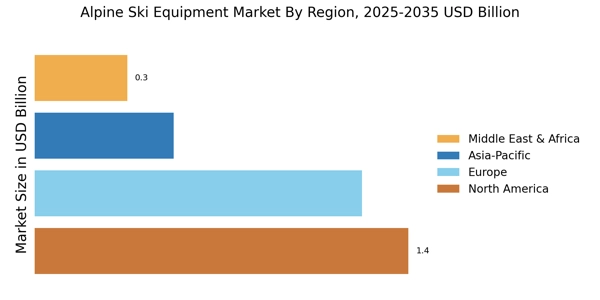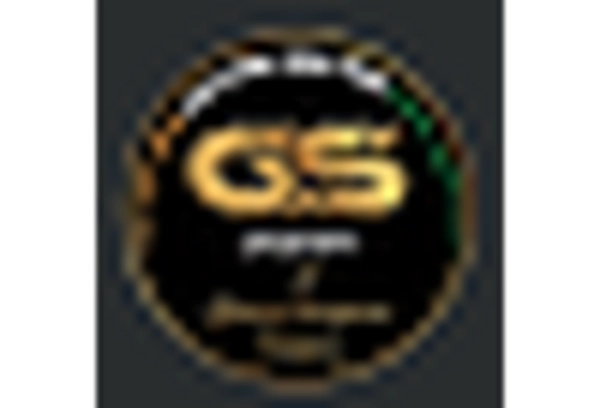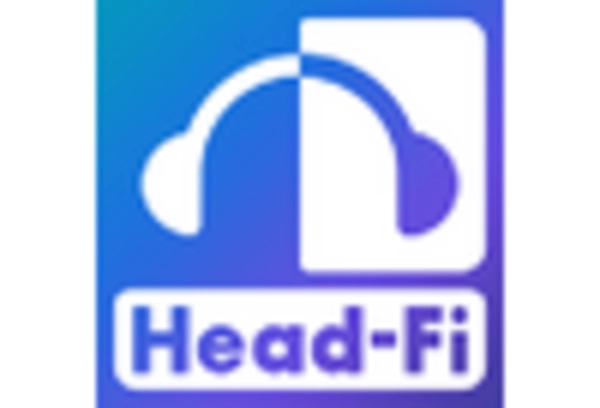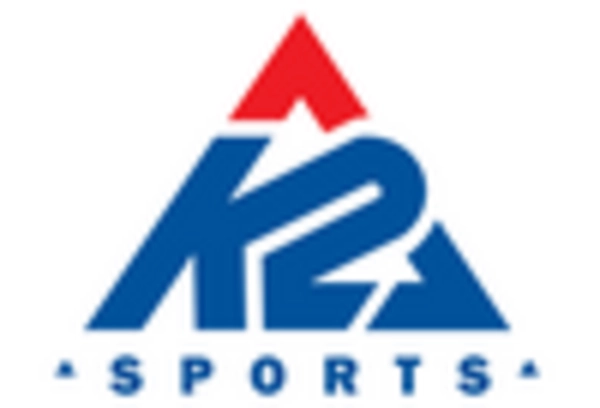Growth of Adventure Tourism
The rise of adventure tourism is significantly influencing the Alpine Ski Equipment Market. As more individuals seek unique and thrilling experiences, skiing has emerged as a popular choice among adventure seekers. This trend is reflected in the increasing number of ski resorts and facilities being developed worldwide, catering to diverse skill levels. According to industry reports, the adventure tourism sector is expected to grow by 20% in the coming years, which will likely drive demand for high-quality ski equipment. This growth presents an opportunity for manufacturers to expand their product lines and target new demographics, including younger and more adventurous consumers. The Alpine Ski Equipment Market stands to benefit from this trend as it aligns with the evolving preferences of modern travelers.
Technological Innovations in Equipment
The Alpine Ski Equipment Market is experiencing a surge in technological innovations that enhance performance and safety. Advanced materials such as carbon fiber and lightweight alloys are increasingly utilized in ski construction, resulting in improved durability and maneuverability. Additionally, the integration of smart technology, including sensors and GPS tracking, allows skiers to monitor their performance in real-time. According to recent data, the market for smart ski equipment is projected to grow at a compound annual growth rate of 12% over the next five years. This trend indicates a shift towards more sophisticated gear, appealing to both recreational and professional skiers. As manufacturers continue to invest in research and development, the Alpine Ski Equipment Market is likely to witness further advancements that could redefine the skiing experience.
Influence of Social Media and Marketing
The influence of social media and digital marketing is reshaping the Alpine Ski Equipment Market. Brands are leveraging platforms like Instagram and YouTube to showcase their products and connect with potential customers. Influencer partnerships and user-generated content are becoming essential strategies for engaging younger audiences. Recent data suggests that over 60% of consumers are influenced by social media when making purchasing decisions related to outdoor sports equipment. This trend indicates that effective online marketing can significantly impact brand visibility and sales. As the Alpine Ski Equipment Market continues to evolve, companies that adapt their marketing strategies to include social media engagement are likely to thrive in a competitive landscape.
Increased Participation in Winter Sports
The Alpine Ski Equipment Market is witnessing a notable increase in participation in winter sports, driven by various factors such as improved accessibility and promotional efforts. Skiing is becoming more popular among diverse age groups, with ski schools and programs designed to attract beginners. Recent statistics indicate that participation in skiing has risen by 15% over the past three years, suggesting a growing interest in winter sports. This increase is likely to stimulate demand for entry-level ski equipment, as new skiers seek affordable yet reliable gear. Additionally, the Alpine Ski Equipment Market may see a rise in rental services, as many newcomers prefer to rent equipment before making a purchase. This trend could lead to a more dynamic market landscape, with opportunities for both established brands and new entrants.
Sustainability and Eco-Friendly Practices
Sustainability has become a pivotal driver in the Alpine Ski Equipment Market, as consumers increasingly prioritize eco-friendly products. Manufacturers are adopting sustainable practices, such as using recycled materials and reducing carbon footprints in production processes. This shift is not only beneficial for the environment but also aligns with the values of a growing segment of environmentally conscious consumers. Recent studies indicate that approximately 30% of skiers are willing to pay a premium for sustainable equipment. This trend suggests that brands focusing on sustainability may gain a competitive edge in the market. Furthermore, the Alpine Ski Equipment Market is likely to see an increase in partnerships with environmental organizations, enhancing brand reputation and consumer trust.


















Leave a Comment